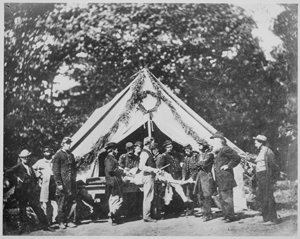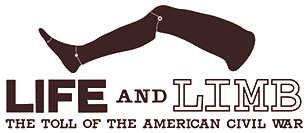
HIGHER EDUCATION

Amputation being performed in a hospital tent, Gettysburg, July 1863
Courtesy National Archives and Records Administration
Reconstructing State and Soldier: Disability and the American Civil War provides students and instructors the opportunity to develop discussion of the issues raised in the exhibition Life and Limb: The Toll of the Civil War by exploring the ways in which hitherto separate fields of scholarship, on disability studies, on the Civil War, military, medical, literary, social and political, can be brought together to expand our understanding of both the immediate and longer-term impact of wounding in that conflict. The module comprises six one-hour classes, sub-divided into three thematic units as listed below. Each class provides a selection of primary and secondary readings along with suggested class discussion questions designed to draw out some of main themes of the primary material and the arguments of the secondary. Information about the module’s author, suggested use, and academic objectives is also available online at About the Module.
Unit 1. Dismembering the Nation comprises material for two classes that will enable students to discuss pre-Civil War reactions to war veterans and to disability, the destructiveness of the Civil War itself on combat troops, and the impact of injury and interventionist treatment from both soldiers’ and surgeons’ perspectives.
- Class 1: Warfare and Wounding: The Human Wheel
- Class 2: Battlefields and Bullets: The Red Badge of Courage
Unit 2. Prosthetic Legs and Phantom Limbs contains material for two classes that focus on the responses of the soldiers, their states, families and surgeons to Civil War injuries, and the efforts made to facilitate the post-war recovery of wounded veterans. It introduces students to the various state and federally-funded programs to aid the disabled veteran and to the medical response to physical injuries.
Unit 3. Remembering and Forgetting considers the broader contemporary cultural responses to both psychological and physical injuries, and the national, sectional and racial implications of reconstruction. This unit is designed to extend students’ understanding of the impact of injury beyond the battlefield itself and beyond the most obvious physical damage that a Civil War combatant might sustain to probe the emotional response to war at both individual and national level.


